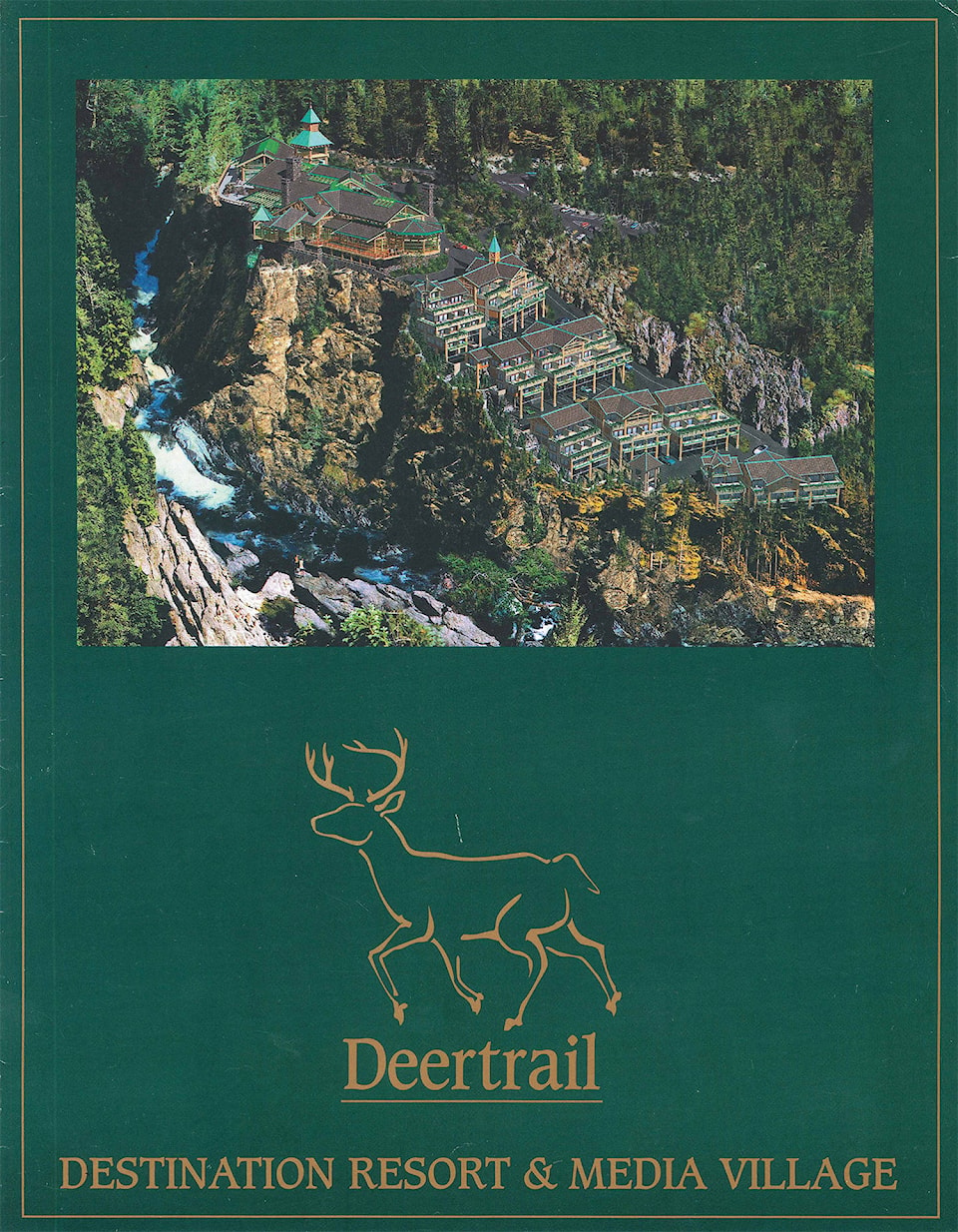While it began its recorded history as a farm George and Sis Weiler called Deer Trails, where they raised Jersey cattle and turkeys during the 1920s, ‘30s and ‘40s, the beautiful wooded site alongside the Devil’s Potholes of the Sooke River has been the subject of many dreams. Today it is preserved as parkland.
This illustration shows a dream held by Victoria developer Albert Yuen and his wife Rosabelle, one of a series of speculative projects they planned after they bought the rocky 160-acre terrain in the early 1980s, from then-owner Jack Barnes, a Victoria accountant.
ALSO READ: SOOKE HISTORY: When the Spanish flu hit Sooke
Promoted as “Deertrail Destination Resort and Media Village,” the Yuen project depicted in their 1990s brochure read “The lodge and hotel will offer food and beverage service capacity for up to 1,000 guests, 250 luxury hotel rooms and suites, conference facilities for 450 persons, pool, spa and fitness centre …” and “In the planning stage … the future home of HD3D Studios, a leading-edge … 3D motion picture, television and audio production facility …” and even “a general store and rainforest cottages.”
Long gone were the days when the CNR line ran by the pioneer farm, and where George Weiler would order shipments of hay dropped off when the freight train made its run northward to pick up logs and lumber from Leechtown. The tricky part was that Weiler would lay in a supply of beer and get the train crew to help unload hay, and then the train would get way behind schedule. Today this freight route is the very popular Galloping Goose Corridor.
Albert Yuen had initially obtained a government grant providing seed money to develop a resort, and many folk were attracted to visit the site and admire his innovative ideas on recycling, utilization of the natural stone and timber, and preserving the natural environment. World-class architects vied to be involved, but funding to accomplish his dreams proved to be elusive.
ALSO READ: SOOKE HISTORY: Phillips at Highway 14 before it was home to Sooke’s third traffic light
During their ownership the Yuens built a lodge incorporating massive timbers hewn from old-growth Douglas fir, perched on the edge of a riverside cliff. One of its dramatic features was a barbecue pit built of stone, large enough to roast an ox.
Disappointingly for the Yuens, the passage of time did not materially advance the project, and foreclosures were instituted. The Yuen dreams were given up, the uncompleted lodge was seen as a hazard, and was dismantled as a safety measure.
Nowadays thousands visit the Sooke Potholes Park for the natural beauty, and the T’Sou-ke nation operates a popular campsite called Spring Salmon Place.
•••
Elida Peers is the historian of the Sooke Region Museum.
